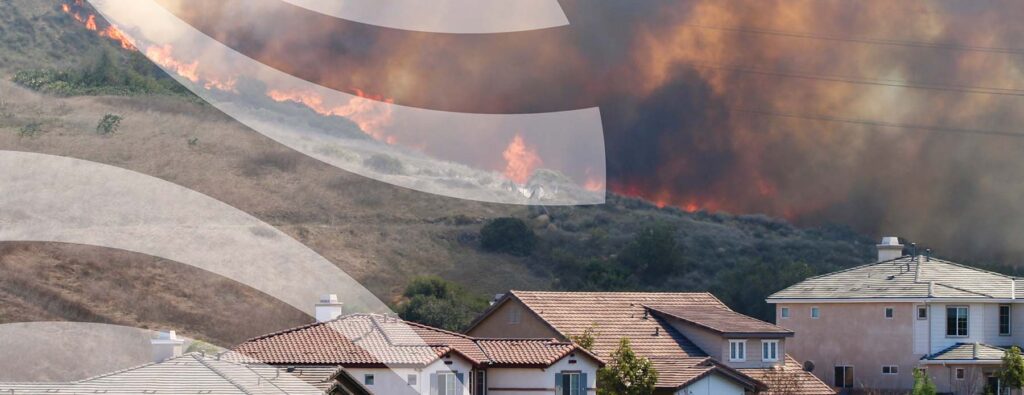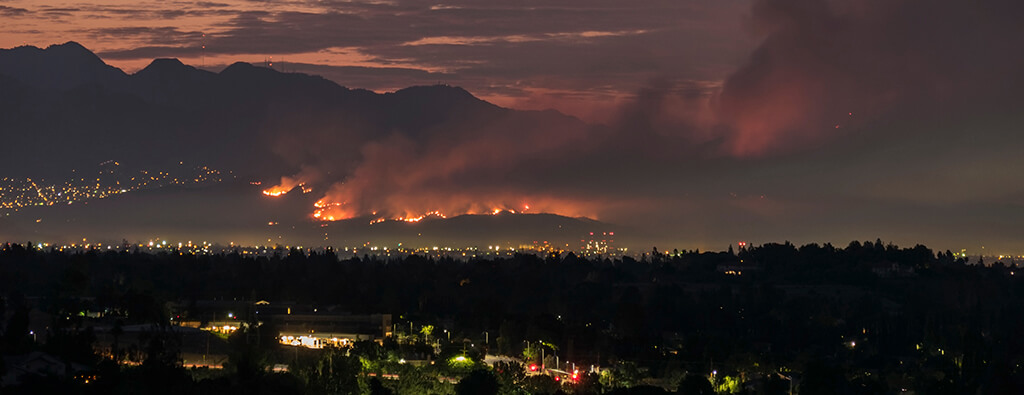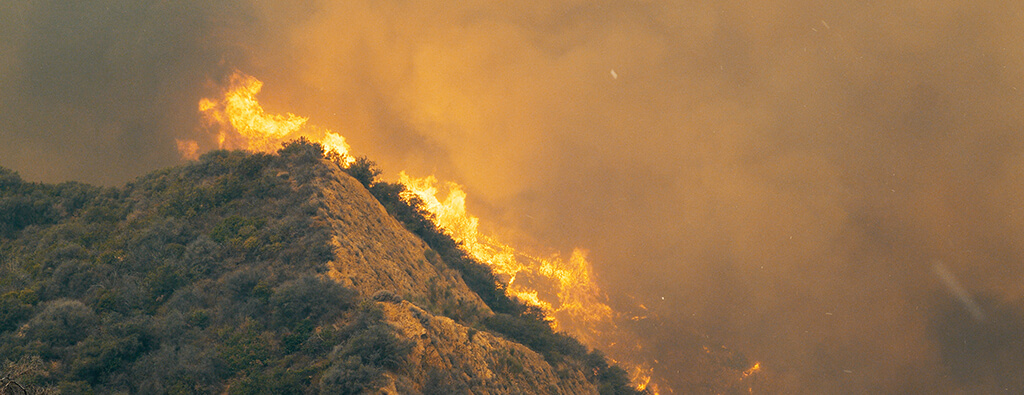Wildfires possess a devastating and formidable destructive power, and we sometimes forget that they
are a natural part of the country’s forest ecosystem, but according to the National Interagency Fire Center, 22,277 wildfires have burned 640,741 acres across the United States since January 1, 2023. Fueled by dry vegetation, strong winds, and ignition sources, these infernos can rapidly spread across vast areas, consuming everything in their path. Therefore, effective wildfire prevention, preparedness, and response strategies are crucial to mitigate their destructive power. One way to protect your property is to create and maintain defensible space.
Protect your Property with Defensible Space
A defensible space can help protect your property and loved ones from these fires. In contrast to the traditional lush yard, a defensible space is about placing plantings to decrease the spread of fires. In other words, it is the area around a home or other structure where flammable vegetation, such as grass, trees, and shrubs, is modified and maintained to prevent or slow the spread of wildfire from embers, direct flame contact, or radiant heat. This space also creates a safe zone from which firefighters can work, reducing the chance of a structure fire moving to the surrounding forest and other homes. There are preparations homeowners can take to help their homes withstand ember attacks and minimize the likelihood of flames or surface fire touching their homes. Experiments, models, and post-fire studies have shown homes ignite due to the condition of the house and everything around it, up to 200′ from the foundation. This is called the Home Ignition Zone (HIZ).
Creating Defensible Space
To create defensible space around your residence or business, divide your property into zones and then reduce or eliminate vegetation in each zone according to proven wildfire mitigation strategies.
Immediate Zone
This includes the home and the area 0-5′ from the furthest attached exterior point of the home. Create a non-combustible zone: Remove dead leaves, debris, and pine needles from gutters, shingles, and roof overhangs; replace loose shingles or roof tiles; install 1/8-inch metal mesh screening on vents; repair damaged or loose window screens; replace fiberglass screens with aluminum screens and remove all flammable material, especially stacks of firewood and scrape lumber away from walls and from underneath decks and porches. Remove flammable plants such as arborvitae, rosemary, eucalyptus, and cypress within the 5′ immediate zone.
Intermediate Zone
This includes the area 5-30′ from the furthest exterior point of the home. Manage landscaping to create breaks that will help decrease the spread of a wildfire: Clear vegetation from under propane tanks, create fuel breaks with driveways, paths, patios, and decks, and keep all grass mowed to 4″ and well-watered, prune trees up to 6-10′ from the ground (not to exceed 1/3 of tree height), space trees at least 18′ between crowns (more distance required on slopes), and ensure mature tree canopy is no closer than 10′ to the home, and limit trees and shrubs to small clusters of a few each to create breaks in the landscape.
Extended Zone
This includes the area 30-100′ out to 200′ from home. Manage this area to break up the path of fire and keep flames smaller and on the ground: Remove heavy accumulations of ground litter, remove dead plant and tree material, remove small conifers growing between mature trees, remove vegetation adjacent to storage sheds or outbuildings, and space trees 30-60′ from home so there are at least 12′ between canopy tops, space trees 60-100′ from home so there are at least 6′ between canopy tops. Ensure that roadways, also an effective firebreak, approaching the house is wide enough for fire trucks and, preferably, an area where they can turn around easily.
Source: National Fire Protection Association
With some planning, a defensible-conscious landscape can help protect your home, be aesthetically pleasing, provide food and cover for wildlife, require less water for irrigation, and provide shade to cool the home. If a wildfire is approaching your house, use your evacuation plan and leave the area under the direction of authorities. With an effective defensible space, your home will stand a better chance of being there when you’re cleared to return.



